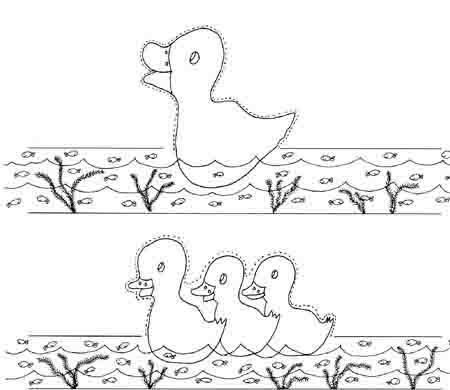Duck
Facts.
A duck is
a wild or domesticated waterfowl, or a bird that swims. It
belongs to the family Anatidae. It is related to the goose and
swan but is smaller. Wild ducks are the leading game birds. On
the North American continent there are over 40 different species
of wild duck. There are many varieties of ducks, including River
ducks (such as the Mallard), Mergansers (or sawbills, long-bodied
ducks with rough-edged bills who feed on fish), Wild ducks, Wood
ducks, Black ducks, the Scaup (a diving duck), and Domesticated
ducks (the white Aylesbury and the white Pekin are the most popular
table ducks, and the Eider duck, valuable for its down which is
used in pillows and bedding). Some
ducks live near the sea or some large body of fresh water. A female
is called a duck, a male is called a drake, and
a young duck is called a duckling. Many ducks have colorful
feathers. The drake is usually brighter in color while the female
is drab for protective coloration. Ducks have heavy bodies, short
legs, webbed feet and broad, flattened beaks.
Ducks have
thick feathers with an undercoat of down to protect their bodies
from becoming wet or losing heat. They
continually groom (preen) and restore the oil to their
feathers from a gland right in front of the tail. This also protects
them from the water and cold.
Ducks eat
water plants, insects, crustaceans, shellfish, frogs, and fish,
depending upon the species. When feeding in the water, a sifting
device in the bill separates food from water and mud.
Ducks live
in large flocks and migrate south in the fall. Most ducks are
good swimmers and divers. In the spring females grow special down
feathers which they pull out from the breast to insulate the nest
and cover the eggs. As
soon as the hatched ducklings can walk, the mother duck leads
them to the water. They can swim immediately but cannot fly until
they are 6 weeks old or more, when their wings are stronger.
Top
![]()
